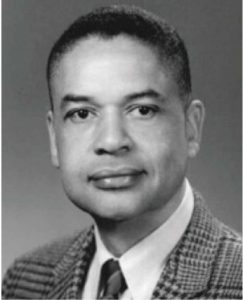
Engineering above all is a field of human endeavor. Engineering can indiscriminately connect people and improve lives.
In honor of Black History Month, Prof. Rob Ettema shares his recent publication on Philip G. Hubbard.
Hubbard was an electronics-hydraulics engineer who in 1956 developed the hot-film anemometer, the first instrument to measure turbulence in water flow. He was also the first African-American Professor at the University of Iowa.
Hubbard’s advisor for both his master’s thesis and PhD dissertation was Hunter Rouse, a CSU civil engineering PhD graduate in hydraulic engineering. Rouse also advised CSU’s Maury Albertson as a PhD student and spent many summer semesters at CSU.
Read Prof. Ettma’s article to learn more about Hubbard’s pioneering contributions to hydraulic engineering and the additional barriers he faced as a Black academic in the pre-Civil Rights Act United States.